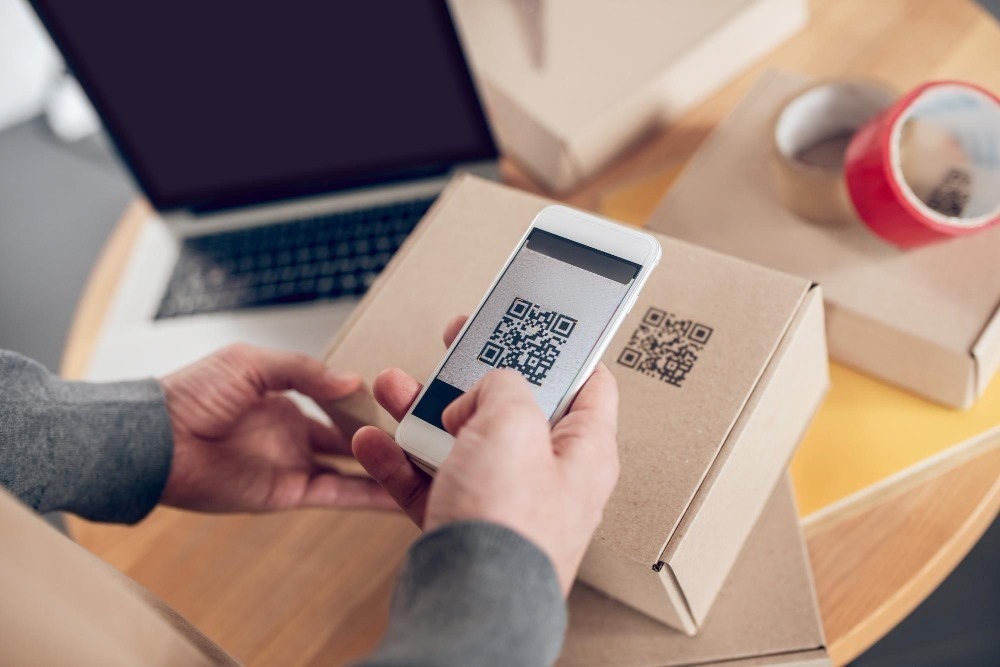Both barcodes and QR codes are widely used in today’s business technology. These two categories of codes are now needed for several industries, including manufacturing, shopping, healthcare, and transportation. Information may be saved and accessed quickly and effectively using these codes.
Because of their improved functionality, which includes the capacity to hold more data and allow dynamic content like videos and links, QR codes and barcodes have grown in popularity in recent years. That’s why it is important to know the advantages of each of them to understand their helpfulness.
So, let’s start by learning about each of them separately.
What is a QR code
A two-dimensional barcode called a QR code, short for Quick Response code, can be read by a barcode reader or scanned using a smartphone. Numerous types of data, including text, URLs, contact details, and more, can be stored in QR codes.
QR codes are usually used for digital payments. Customers can use their cell phones to complete transactions on numerous payment platforms that support QR codes.
Besides, today you can find hundreds of apps and generators to create a QR code easily. You can create your codes and put any link or information you would like.
These benefits make QR codes a valuable tool for modern businesses, particularly in marketing and e-commerce applications.
What is a Barcode
A barcode is a pattern of parallel lines or bars that can be machine-readable and is often found on items or packaging. Barcodes are widely utilized in many different areas, including retail, healthcare, and logistics. They are used to store and retrieve information quickly and efficiently. One-dimensional (1D) barcodes are the most often used kind of barcode.
Businesses use barcodes as a key tool to track inventories, control supply chains, and complete transactions. They aid in enhancing accuracy and efficiency in duties including shipping and receiving, price checking, and inventory management. Businesses may instantly get data like product details, prices, and stock levels by scanning a barcode, which can assist them in making choices and enhancing their operations.
Differences Between QR Codes and Barcodes
Actually, there are a number of technical differences between QR codes and Barcodes. Let’s discuss them in more detail:
- The first difference concerns data capacity. Compared to standard barcodes, QR codes have a considerably bigger data capacity. Because they can hold more data than a typical barcode, QR codes are a more adaptable and flexible option for organizations.
- The second difference is data type: Text, URLs, contact details, and other forms of information can all be stored in QR codes. Traditional barcodes, on the other hand, mainly store only numbers or characters.
- Another significant difference is scanning. QR codes can be scanned with a smartphone camera or a specialized QR code reader, whereas traditional barcodes require a laser scanner.
- The next technical difference is error correction: QR codes have built-in error correction that enables them to be read even if they are relatively damaged. In contrast, traditional barcodes may not be readable if they are not aligned with the scanner.
- Finally, the main difference is the scope of use: QR codes are commonly used in marketing and e-commerce applications, whereas traditional barcodes are more frequently used for inventory management and supply chain tracking.
In general, QR codes have a number of benefits over regular barcodes. Compared to traditional barcodes, QR codes have a substantially bigger data storage capacity. As a result, QR codes are a more adaptable and flexible option for companies that need to communicate and store more sophisticated data. In addition, QR codes support several data kinds, whereas traditional barcodes normally only offer numeric or alphabetical data, including text, URLs, contact information, and more.
Importance of These Technologies in Modern Business
Due to their capacity to streamline and simplify corporate processes across a variety of industries, QR codes, and barcodes have grown in significance in contemporary business technology. These technologies have completely changed how businesses run and engage with their clients by enabling them to track and manage inventory, scan and process payments, and exchange information with customers.
QR codes are frequently employed in marketing and e-commerce applications, such as mobile payments, and product promotions, allowing companies to interact with clients in fresh and creative ways. Additionally, QR codes can be used by companies of all sizes to track and manage inventories, simplify supply chain management, and provide real-time data insights. An innovative approach like this can make any working process easier.
Conclusion
In conclusion, barcodes and QR codes are two significant technologies that have changed how companies conduct business in the modern world. These codes enable businesses to interact with clients and handle data in new and creative ways. Both technologies, however, have advantages and disadvantages, and the decision between them will be based on the particular requirements and company objectives. These technologies are positioned to play a bigger part in contemporary business as they develop and advance, enhancing productivity, efficiency, and innovation.






